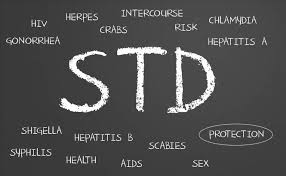What's in this article?
What is HIV?
HIV is a virus that attacks the immune system, which is our body’s natural defence against illness. The virus destroys a type of white blood cell in the immune system called a T-helper cell, and makes copies of itself inside these cells. T-helper cells are also referred to as CD4 cells.
As HIV destroys more CD4 cells and makes more copies of itself, it gradually breaks down a person’s immune system. This means someone living with HIV, who is not receiving treatment, will find it harder and harder to fight off infections and diseases.
If HIV is left untreated, it may take up to 10 or 15 years for the immune system to be so severely damaged it can no longer defend itself at all. However, the speed HIV progresses will vary depending on age, health and background.
Causes of HIV/AIDS
HIV is a retrovirus that infects the vital organs of the human immune system. The virus progresses in the absence of antiretroviral therapy. The rate of virus progression varies widely between individuals and depends on many factors (age of the patient, body’s ability to defend against HIV, access to health care, existence of coexisting infections, the infected person’s genetic inheritance, resistance to certain strains of HIV).
How do you know if you have HIV?
The only way to know for sure whether you have HIV is to get tested. Knowing your status is important because it helps you make healthy decisions to prevent getting or transmitting HIV.
Some people may experience a flu-like illness within 2 to 4 weeks after infection (Stage 1 HIV infection). But some people may not feel sick during this stage. Flu-like symptoms include fever, chills, rash, night sweats, muscle aches, sore throat, fatigue, swollen lymph nodes, or mouth ulcers. These symptoms can last anywhere from a few days to several weeks. During this time, HIV infection may not show up on an HIV test, but people who have it are highly infectious and can spread the infection to others.
If you have these symptoms, that doesn’t mean you have HIV. Each of these symptoms can be caused by other illnesses. But if you have these symptoms after a potential exposure to HIV, see a health care provider and tell them about your risk. The only way to determine whether you are infected is to be tested for HIV infection.
What is STD?
Sexually transmitted diseases (STDs) are caused by infections that are passed from one person to another during sexual contact.
These infections often do not cause any symptoms. Medically, infections are only called diseases when they cause symptoms. That is why STDs are also called “sexually transmitted infections.” But it’s very common for people to use the terms “sexually transmitted diseases” or “STDs,” even when there are no signs of disease.
There are many kinds of sexually transmitted diseases and infections. And they are very common — more than half of all of us will get one at some time in our lives.
How do you know if you have STD?
The only way to know for sure if you have an STD is to visit a health care provider and get tested. If you believe you may have been exposed or contracted an STD, you can learn about the symptoms, treatment and other details in our articles “Sexually Transmitted Diseases (STDs): Quick Facts Overview“. Knowing that info is helpful, but to know for sure go ahead and get tested.
Difference Between HIV and STD
STD is an acronym for sexually transmitted diseases. The term usually refers to diseases like Chlamydia, herpes and gonorrhea. These diseases are spread through sexual contact with a patient who has the disease. HIV is a virus that spreads through a number of means, sexual contact being one of them.
Unprotected sex, especially with a person you don’t know very well, can cause the transmission of STDs. It is very important to understand the relation between STDs and HIV, so that you can easily understand the ways in which you can prevent an HIV infection.
HIV is just one of the viruses that can be transmitted through unprotected sex. Diseases like Syphilis, Herpes and Chlamydia are also sexually transmitted. The difference between the two is that these diseases can be transmitted mainly through sex. However, HIV can be transmitted in a number of other ways. HIV may be transmitted through blood transfusions, from a pregnant mother to a child and also through the sharing of unsterilized syringes and needles.






Leave a Comment